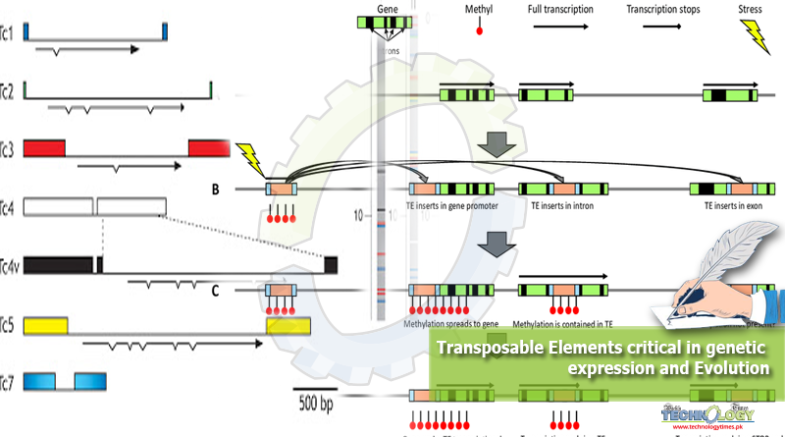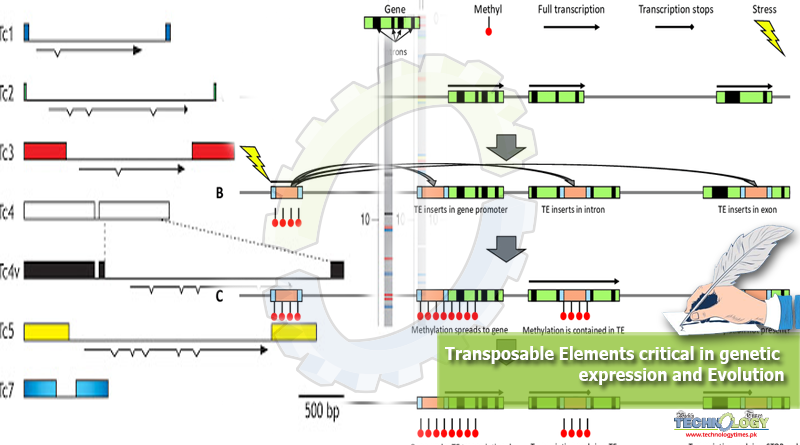Transposable elements that are considered as the part of junk DNA are now discovered to have their role in genetic evolution and expression.

Transposable elements are generally those genetic elements that can change their loci in the genome. They are also referred to as the “jumping genes”. They mostly follow the cut paste mechanism. These elements are found in almost every part of the genome. Conventionally there are considered as a part of junk DNA with a minimal role. A new study of the University of medical school has highlighted the role of transposable elements in genetic evolution and expression.
Transposable Elements as thought to move throughout the genome. These elements have altered the 3D interaction of DNA strands. About a third of the 3D interaction in the cells is due to these jumping genes. In this way, these elements become critical for genetic regulation and expression.
The principle part that decides a 3-D structure is a protein called CTCF. This investigation especially centered on how transposable components make new CTCF locales that, thus, capture existing genomic structure to shape new 3-D contacts in the genome. The authors show that these frequently make variable circles that can impact administrative movement and quality articulation in the cell. These discoveries were seen in human cells and mouse cells and show how transposable components add to the intraspecies variety and interspecies dissimilarity and will manage further research endeavors in areas including gene expression and regulation and transposable elements biology.
The researcher created a computer program, MapGL, to follow the physical addition and loss of short hereditary sequences across species. MapGL helps to predict the influence of structure on an evolutionary perspective. Their input was a set of CTCF binding sites that were labeled by MapGL to show that a sequence gain/loss process explains many of the differences in CTCF binding between humans and mice.
This research proceeds with the extraordinary disclosures that began in the late 1800s when researchers initially took a LOOK at the state of chromosomes through magnifying instruments. They watched the shape contrasts among cells and saw that the shape inside the cores continued as before among mother and little girl cells. Decades later, transposable elements were discovered.
This research group now aims to further study the transposable elements and their effects on the genome. But this time they will focus on only one specie rather than across species. The subsequent stages will incorporate exploratory follow-up utilizing another sequencing technique fit for recognizing transposable component inclusions that are variable across human populaces. This technique was created in a joint effort with Ryan Mills’ lab, at the University of Michigan, Medical School. It is normal that the following outcomes will give an understanding of the transposable components with potential applications to neurodegenerative sicknesses.
